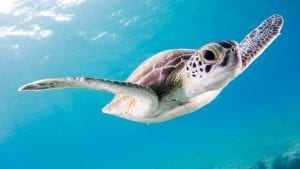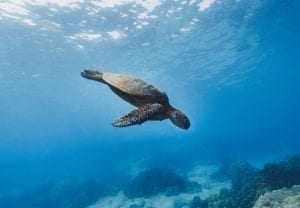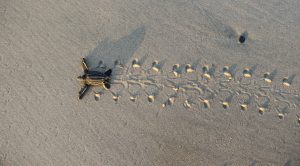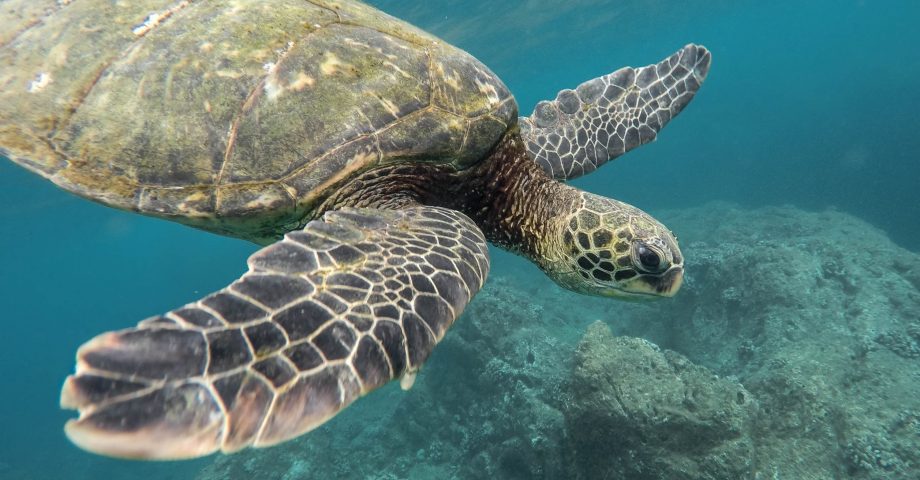Sea turtles are some of the most majestic living things to ever grace our oceans. But how much do we actually know about these graceful creatures? They are some of the most closely-preserved animals on the planet, and are truly fascinating in their behavior – here’s some fascinating facts about sea turtles to help clue you in.
1. Sea turtles are the caretakers of the deep.
Sea turtles generally spend their time hoovering up the seabed. At least, they do to the extent that they eat the plants and seagrass that can often overgrow. In fact, without sea turtles helping to keep things short, seagrass may otherwise harm smaller marine life.
2. Sea turtles are fantastic at going deep.
Sea turtles have the amazing ability to be able to hold their breaths underwater for up to five hours. This makes them incredible divers!
3. They have amazing coronary control.
These curious critters can also slow down their heartbeats if they need to. Believe it or not, a sea turtle can go almost nine minutes without a heartbeat on occasion – this is to help save oxygen.

4. Turtles really do vary in size.
There are several types of sea turtle, and they can differ greatly in size. The biggest turtles are thought to weigh over 1,000lbs, while some of the smallest are around 80lbs in weight.
5. Sea turtle survival can be rare.
Sea turtle survival rates – from childhood to adulthood – is sadly very low. It’s thought that you will only ever see one in a thousand hatching turtles grow up to be an adult. That’s because their eggs can make very easy prey.
6. Turtle shells don’t necessarily work as you might expect.
Believe it or not, sea turtles are unable to retreat into their own shells. This lack of retraction, it is thought, can help them to swim faster and more practically. Other turtles, and of course tortoises, are able to retract to avoid predator attacks.
7. Sea turtles are found worldwide.
You are likely to find sea turtles all over the globe. There are some which live in Australia, while others live up in the Great White North.
8. There are plenty of turtle protections in place.
There are beaches across the world which are cordoned off purely to allow sea turtles to crawl up the beach and lay their eggs. Female turtles are able to lay up to hundreds of eggs, and her young will have to crawl down from the beach into the water.
There are many of these beaches which also have their own special conservation and research facilities.
9. Turtles can live to a ripe old age.
Sea turtles, should they survive childhood, can live to be more than 50 years old. It can take a sea turtle up to 10 to 20 years to mature enough to produce offspring of their own.

10. Turtles eat all kinds of things.
Sea turtles’ diets will vary depending on the species and location. Many turtles like snacking on jellyfish, for example, while others will eat seaweed and algae. Generally, however, you’ll find a sea turtle trimming the odd patch of seagrass.
11. Turtles know where they’re going!
Sea turtles are incredible route finders and planners. They are said to have brilliant inner compasses based on the Earth’s magnetism. Who needs GPS when you have your own built-in compass – just follow your local sea turtles for the best directions, it seems!

FAQs about Sea Turtles
Are sea turtles friendly?
Sea turtles won’t normally be aggressive or likely to cause a fuss unless they feel that you are a threat.
What are the rarest sea turtles on the planet?
The rarest species of sea turtle is likely to be the Kemp’s Ridley - there are only a few thousand of them living globally.
What are baby turtles called?
Baby sea turtles are generally referred to as hatchlings.
Is a sea turtle a mammal?
Turtles aren't mammals, but egg laying reptiles and as such are similar to lizards, snakes, crocodiles and birds.
What's a baby turtle called?
Baby turtles hatch from eggs that have been laid in the sand and are called 'hatchlings'.
Do you know any fun facts about sea turtles? Share them in the comments below!










